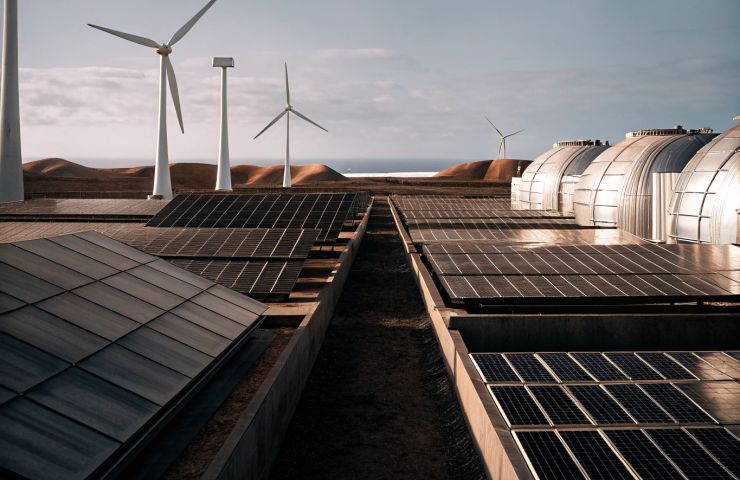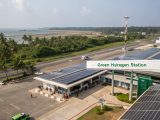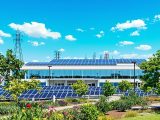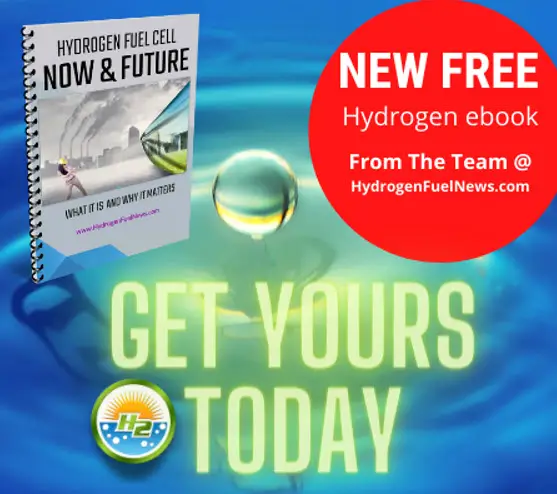
TotalEnergies Bets Big on Green Hydrogen With $16B Chile Megaproject
May 6, 2025TotalEnergies just planted a major flag on the global green hydrogen landscape—and it’s right in the sun-blasted, wind-whipped heart of Chile’s Atacama Desert.
A $16 billion swing at the future
This week, TotalEnergies filed for the necessary environmental permits to build a massive green hydrogen and ammonia production facility—and when we say massive, we mean it. The project is being spearheaded by TEC H2 MAG, the company’s Chilean green energy arm, and it brings together the full clean tech package: 7 GW of wind power, seven electrolyzers, a seawater desalination plant, a state-of-the-art ammonia synthesis facility, and specialized port infrastructure ready to ship clean energy across the world.
The scale of this thing? Once it’s running, the plant is expected to pump out an eye-popping 10,800 metric tons of ammonia every single day. And unlike traditional ammonia, loaded with carbon baggage from fossil fuels, this stuff is made from renewably sourced hydrogen. So the green fertilizers and zero-emission maritime fuel heading to Europe or Japan? They could soon be sailing from Chile’s coast.
Why Chile? It’s got the goods
Chile might not be the first name that pops into your head when you think of a hydrogen superpower—but maybe it should be. The Atacama region is practically tailor-made for sustainable energy, boasting solar capacity factors above 30% and wind capacity factors hitting 65%. That’s world-class. Add in an endless coastline serving up seawater for electrolysis, and it’s crystal clear why TotalEnergies picked Chile over heavyweight players like Saudi Arabia and Australia.
What really sweetens the deal is policy. Chile’s National Green Hydrogen Strategy, kicked off in 2020, is eyeing 25 GW of electrolyzer capacity by 2030, hoping to lock down 20% of global hydrogen exports by 2040. That lines up perfectly with Chile’s big pivot—less copper addiction, more clean molecule exports. And for TotalEnergies, it aligns neatly with their shift away from fossil fuels and toward net-zero ambitions.
Can they actually pull it off?
The timeline’s already ticking. The project entered environmental review in May 2025, with a two-year window to clear regulations. If all goes according to plan, construction kicks off in 2027 and things go live by 2030.
Sound ambitious? That’s because it is. We’re talking about one of the boldest plays for green hydrogen on the planet—right up there with Saudi Arabia’s NEOM and Australia’s Asian Renewable Energy Hub. But big dreams come with big challenges. Desalination raises eyebrows; this facility expects to dump around 50,000 m³ of brine per day into local marine ecosystems. That’s a concern, especially with Chile’s thriving copper industry already thirsty for water.
How the tech stacks up
This isn’t just big—it’s high-tech, too. Here’s what powers the system:
- PEM Electrolyzers, running on wind power, slice water into clean hydrogen with precision.
- Reverse osmosis desalination makes sure the water’s purified enough for reliable hydrogen production.
- The Haber-Bosch process brings hydrogen and nitrogen together to form clean ammonia—familiar to farmers, and now a rising star in zero-emission global shipping.
Why this project really matters
For TotalEnergies, this isn’t just another green project—it’s a cornerstone in their push to hit their 2050 net-zero target. For Chile, it’s a defining moment: a potential shift from exporting metal to exporting clean energy molecules. It could even trim LNG imports by 15%, while creating around 8,000 jobs during construction.
Zooming out, this project taps into a growing global hunger. Japan has pledged over $150 billion for importing green ammonia over the next decade, and Europe’s ports are scouting for sustainable energy options to fuel their ships. Chile’s bold move isn’t happening in isolation—it’s answering a call from global supply chains who’ve already begun the energy transition.
How it compares on the world stage
If everything goes according to plan, this project could go toe-to-toe with giants like NEOM—not just in scale, but in price. Right now, Chile’s renewable energy is dirt cheap, coming in at just $20/MWh. That could bring hydrogen production costs down to below $1.50 per kg—competitive with fossil-based methods, but without the climate guilt.
So what’s next? If the environmental cards fall in Chile’s favor, the country could emerge as the planet’s clean molecule supplier. And TotalEnergies? They’d prove that an oil-era giant can pivot—not timidly, but boldly—toward a cleaner energy future.
It’s wildly ambitious. It’s definitely risky. But it’s also exactly the kind of project the world needs right now. The real question? Who’s next to step up?



 With over 15 years of reporting hydrogen news, we are your premier source for the latest updates and insights in hydrogen and renewable energy.
With over 15 years of reporting hydrogen news, we are your premier source for the latest updates and insights in hydrogen and renewable energy.
Very well written article.